There is no difference. The two terms are used interchangeably:
Track-and-Hold
Track-and-hold, often called 'sample-and-hold,' refers to the input-sampling circuitry of an ADC. The most basic representation of a track-and-hold input is an analog switch and a capacitor. (See figure.) The circuit is in 'track' mode when the switch is closed. When the switch opens, the last instantaneous value of the input is held on the sampling capacitor, and the circuit is in 'hold' mode.
-- Maxim ADC Glossary
A capacitor takes time to charge or discharge to the level of the incoming signal. This time is the track time (aka the sample time). The amount of time taken depends to a large extent on both the size of the hold capacitor and the output impedance of the device you are sampling.
Note the word "ideal" in the description of your waveform a. Ideal never exists in the real world, so you have to add the "tracking" period to be able to sample the waveform.
That is why there is only one circuit shown for the input, because they are both the same thing.

